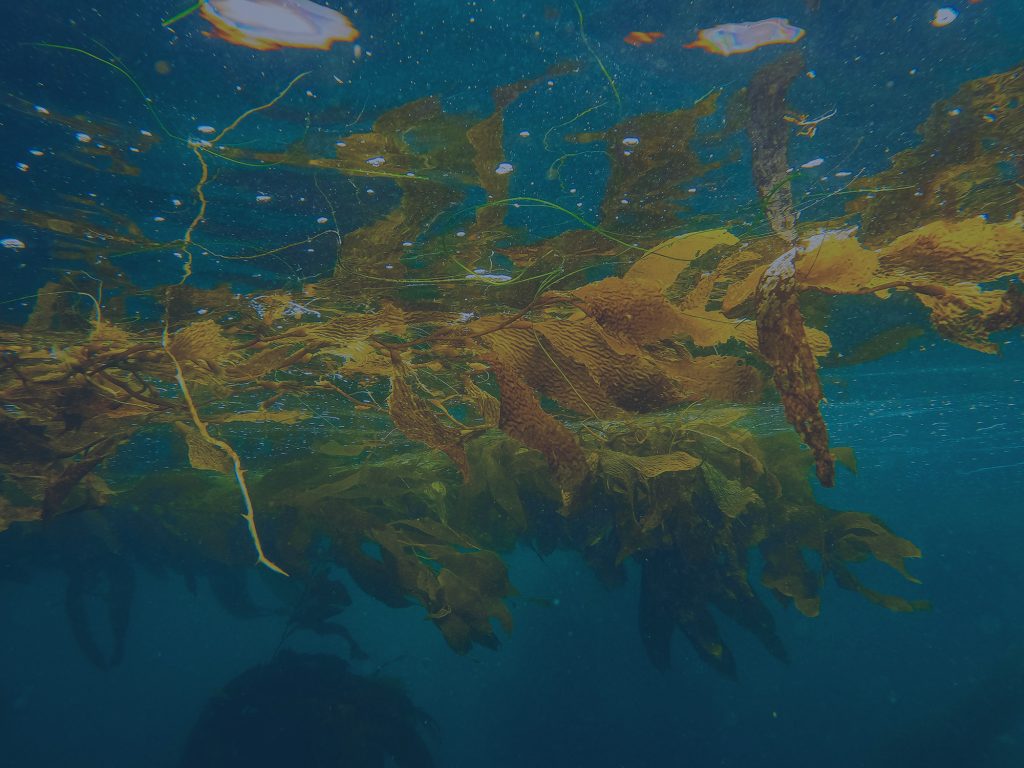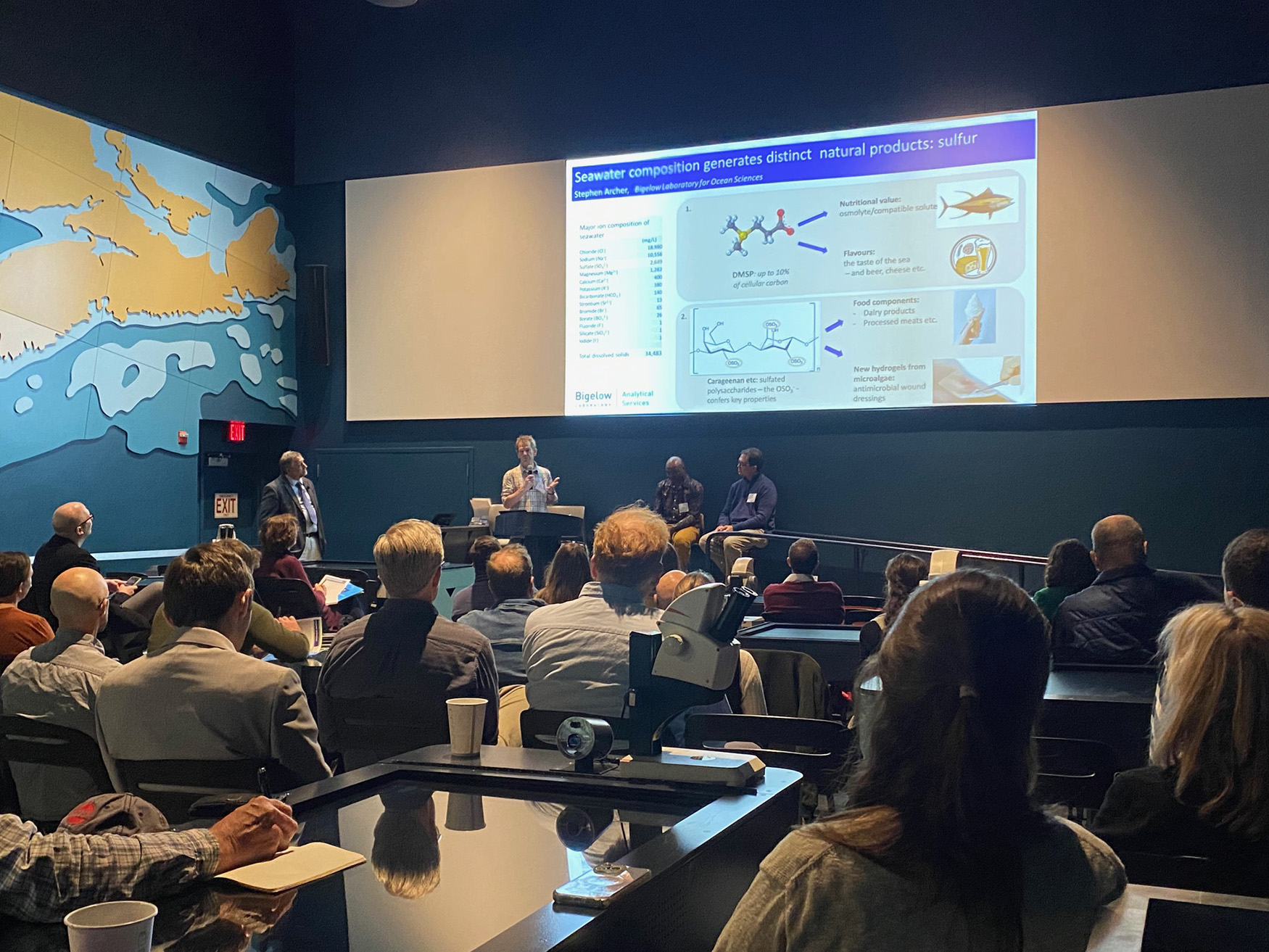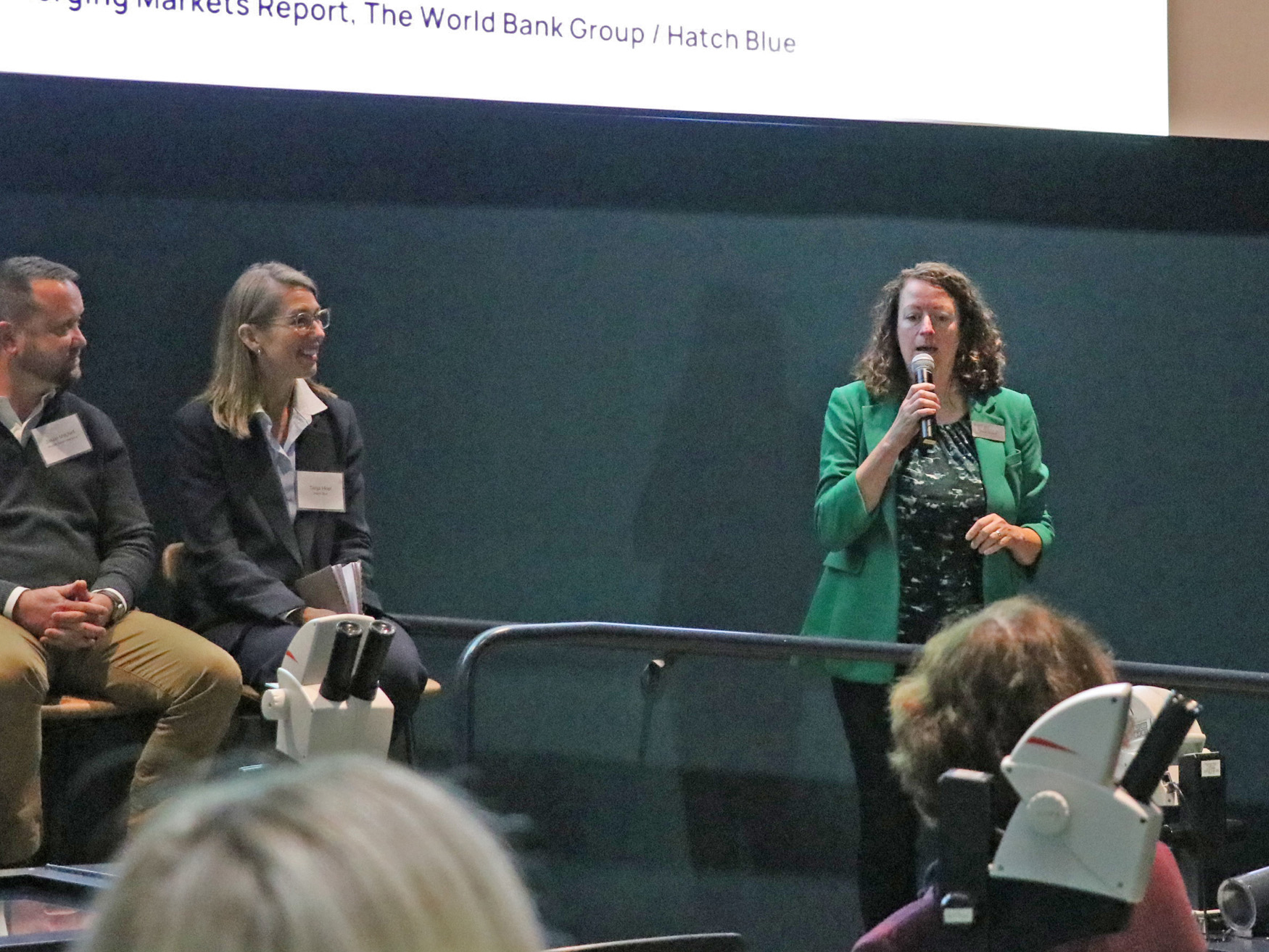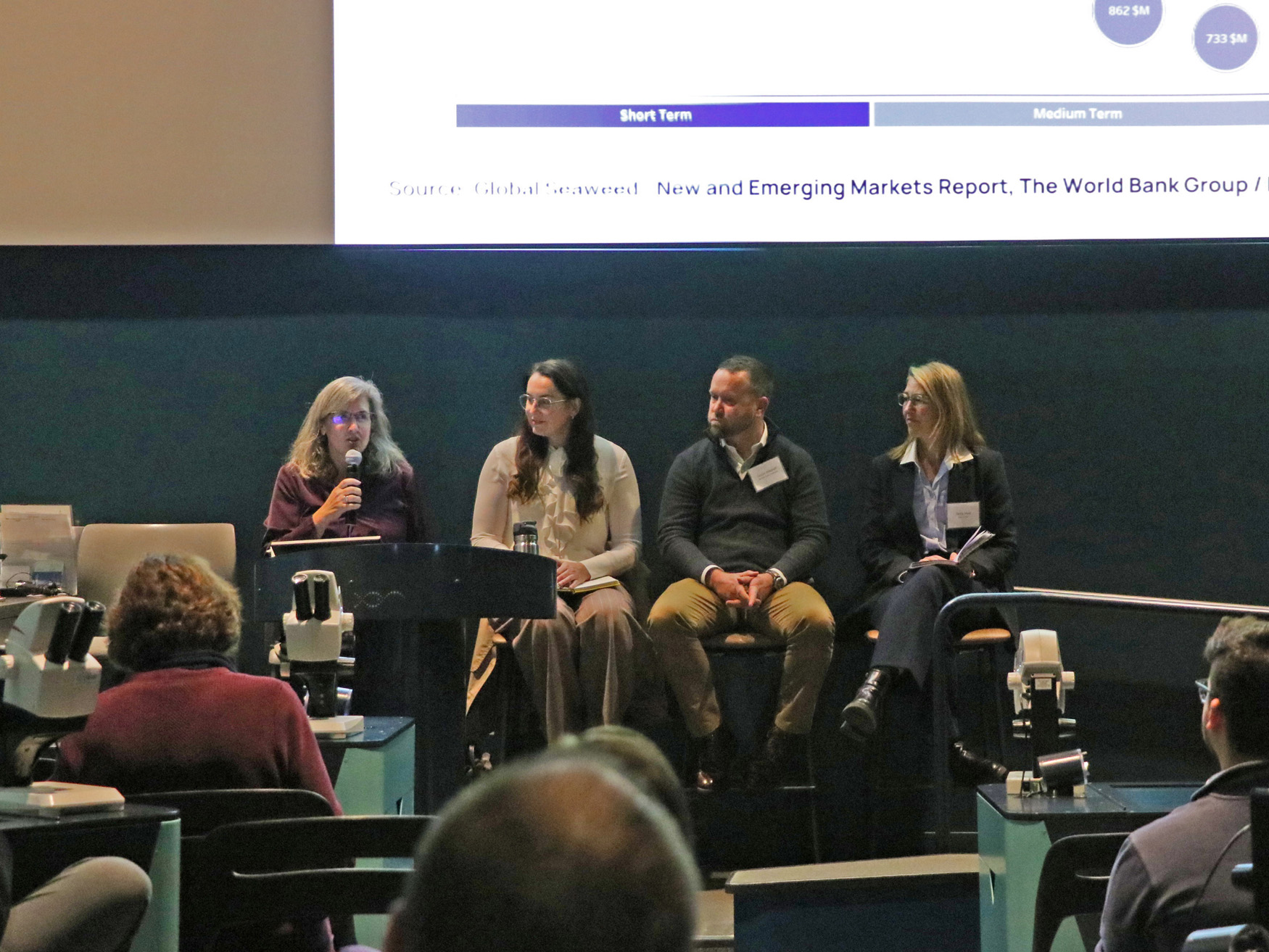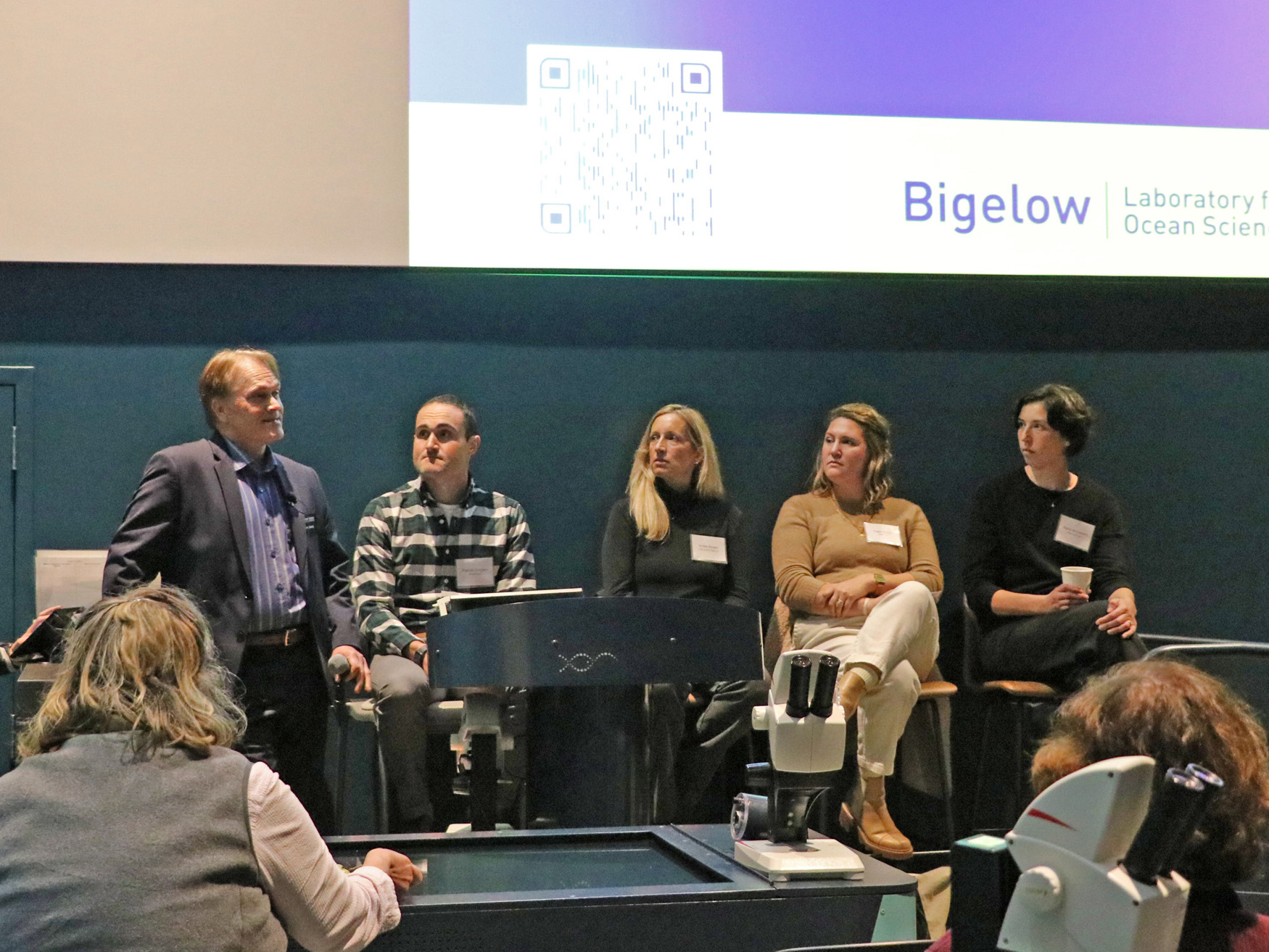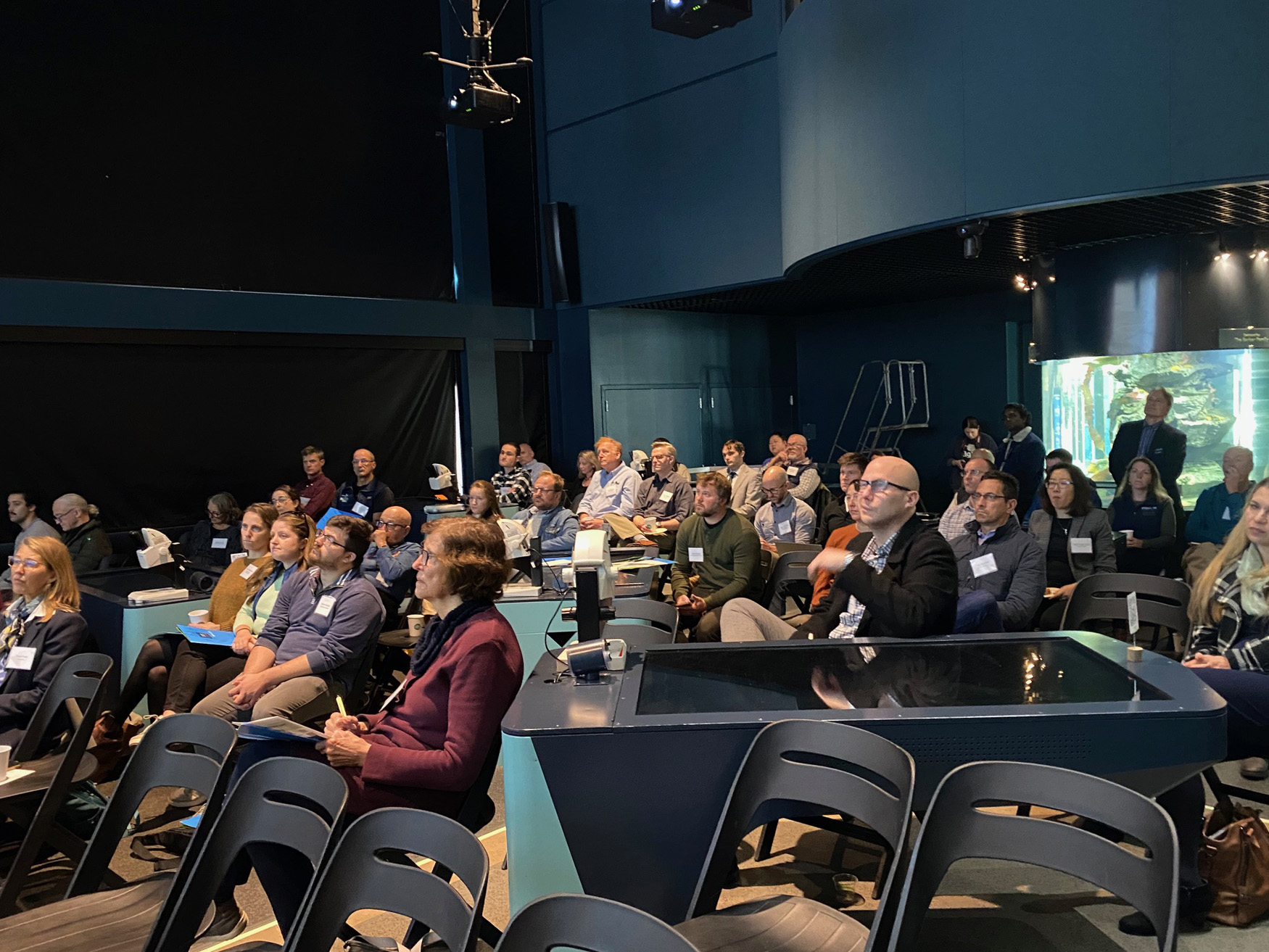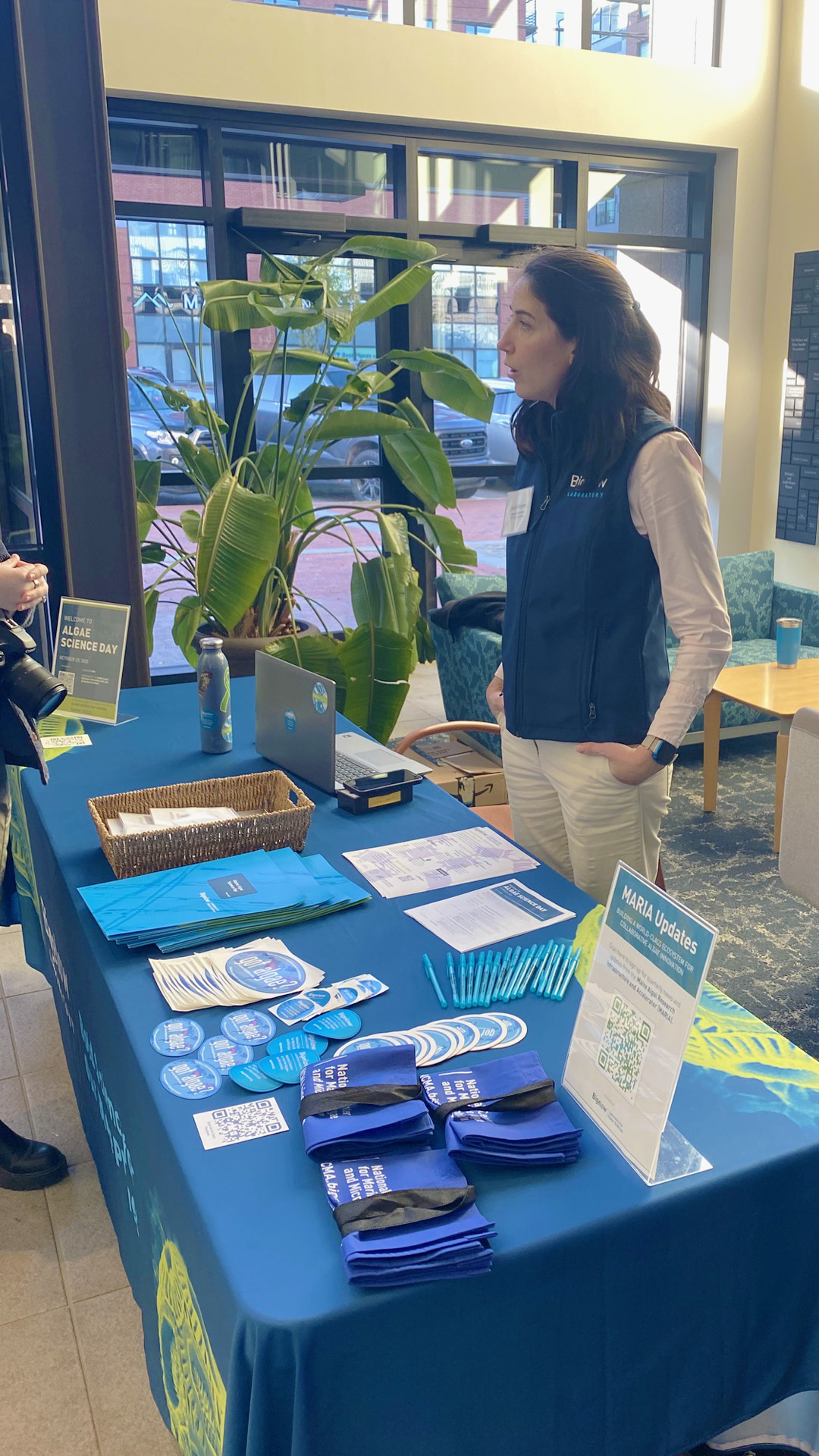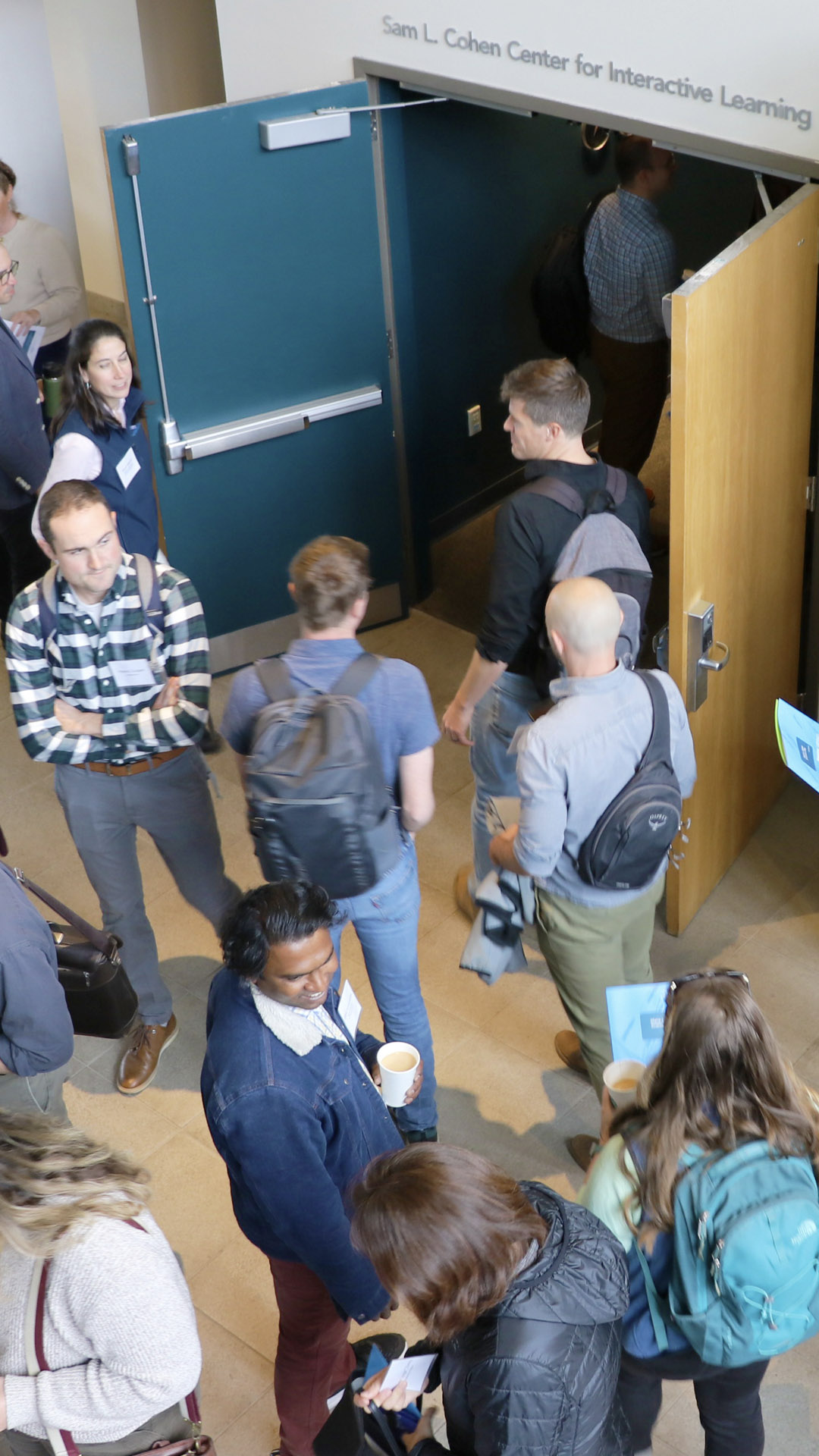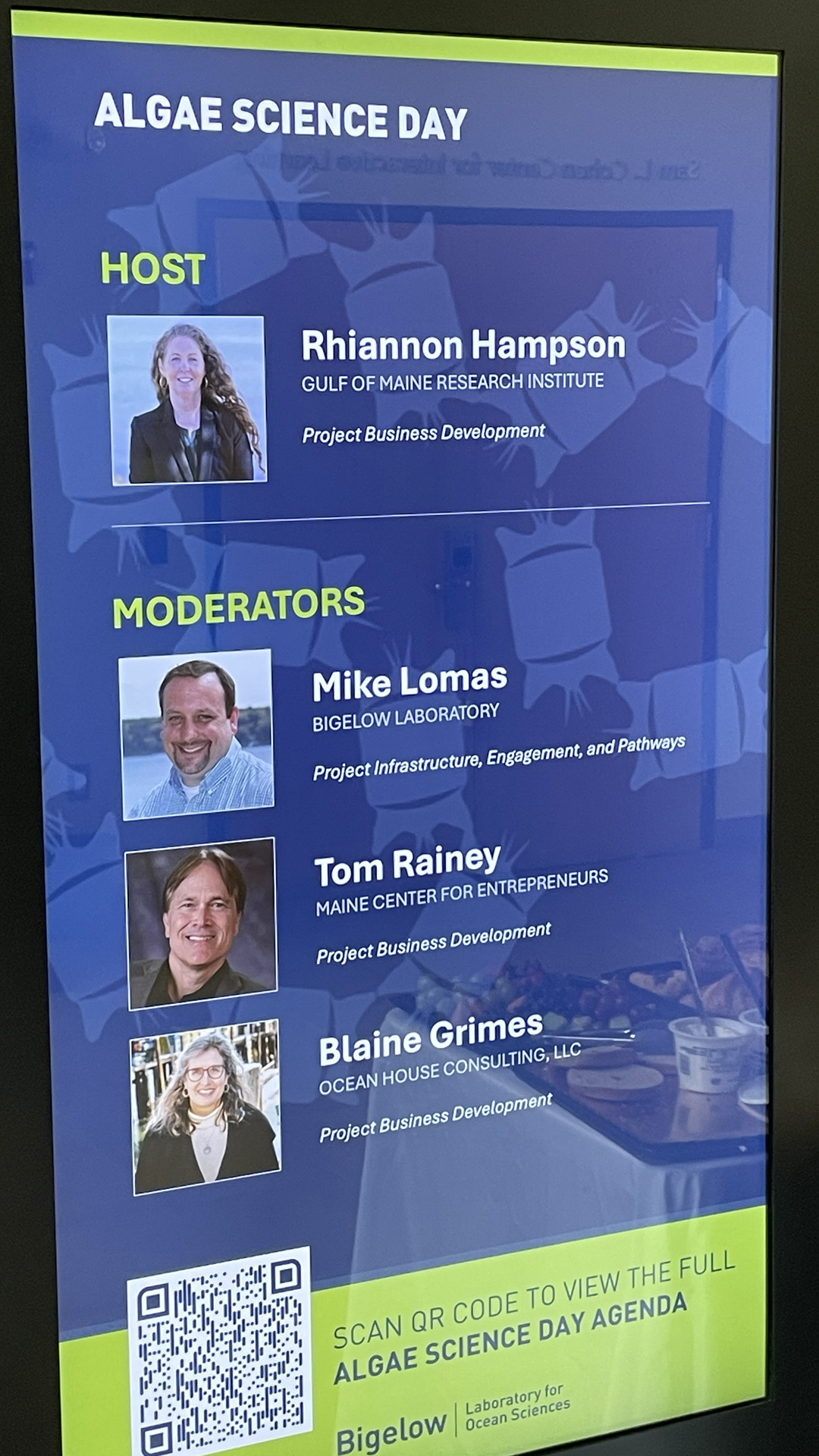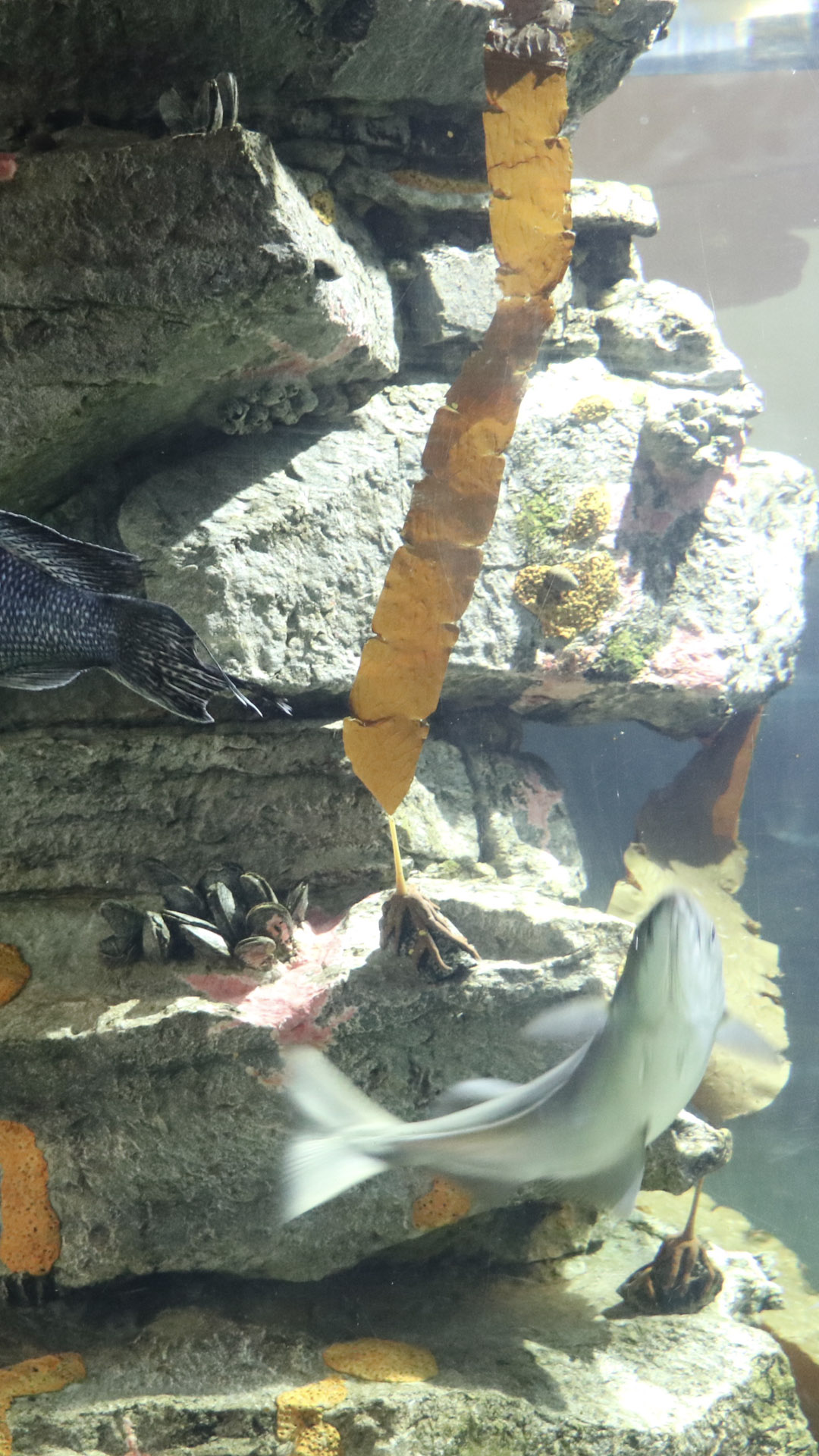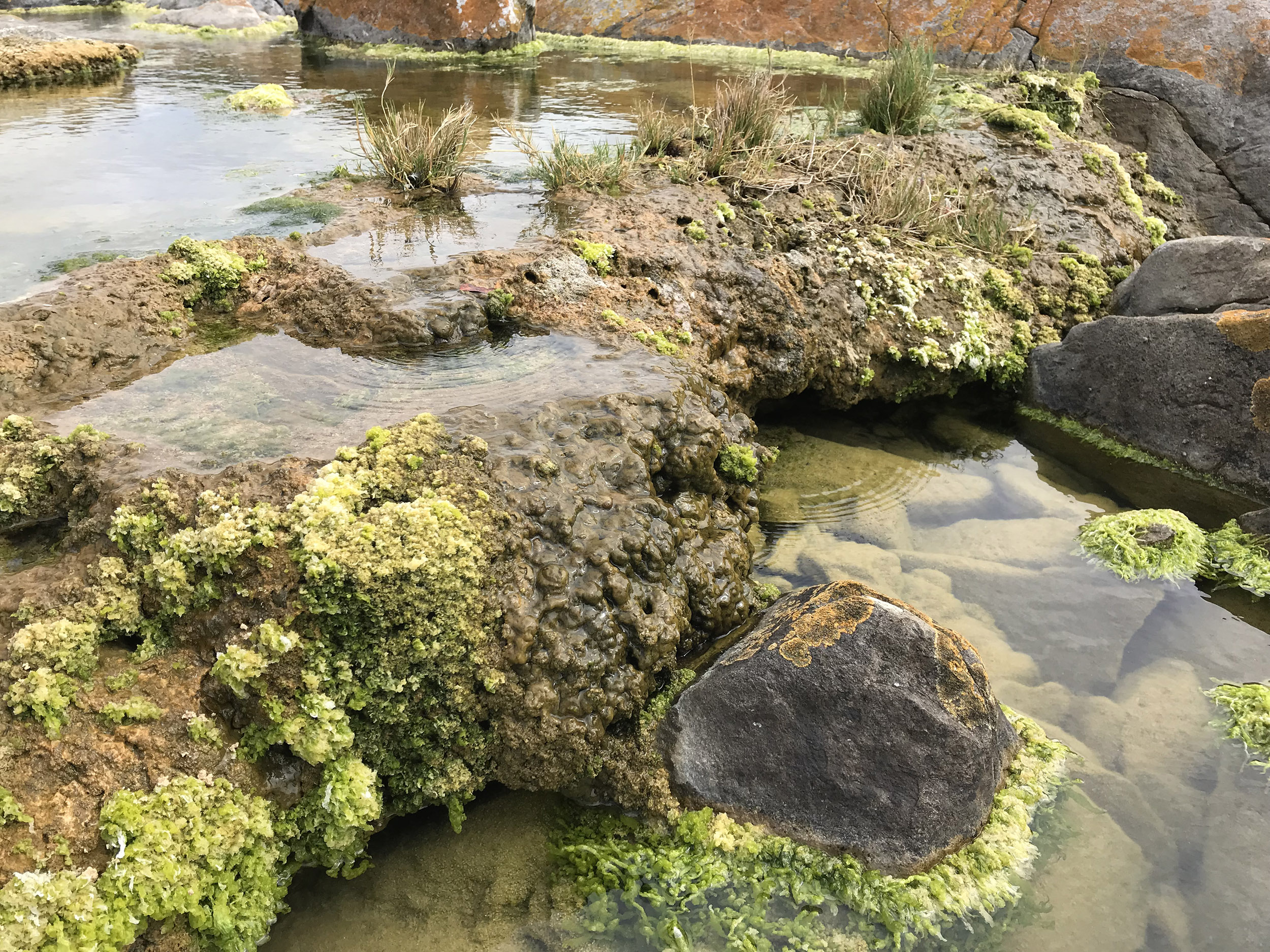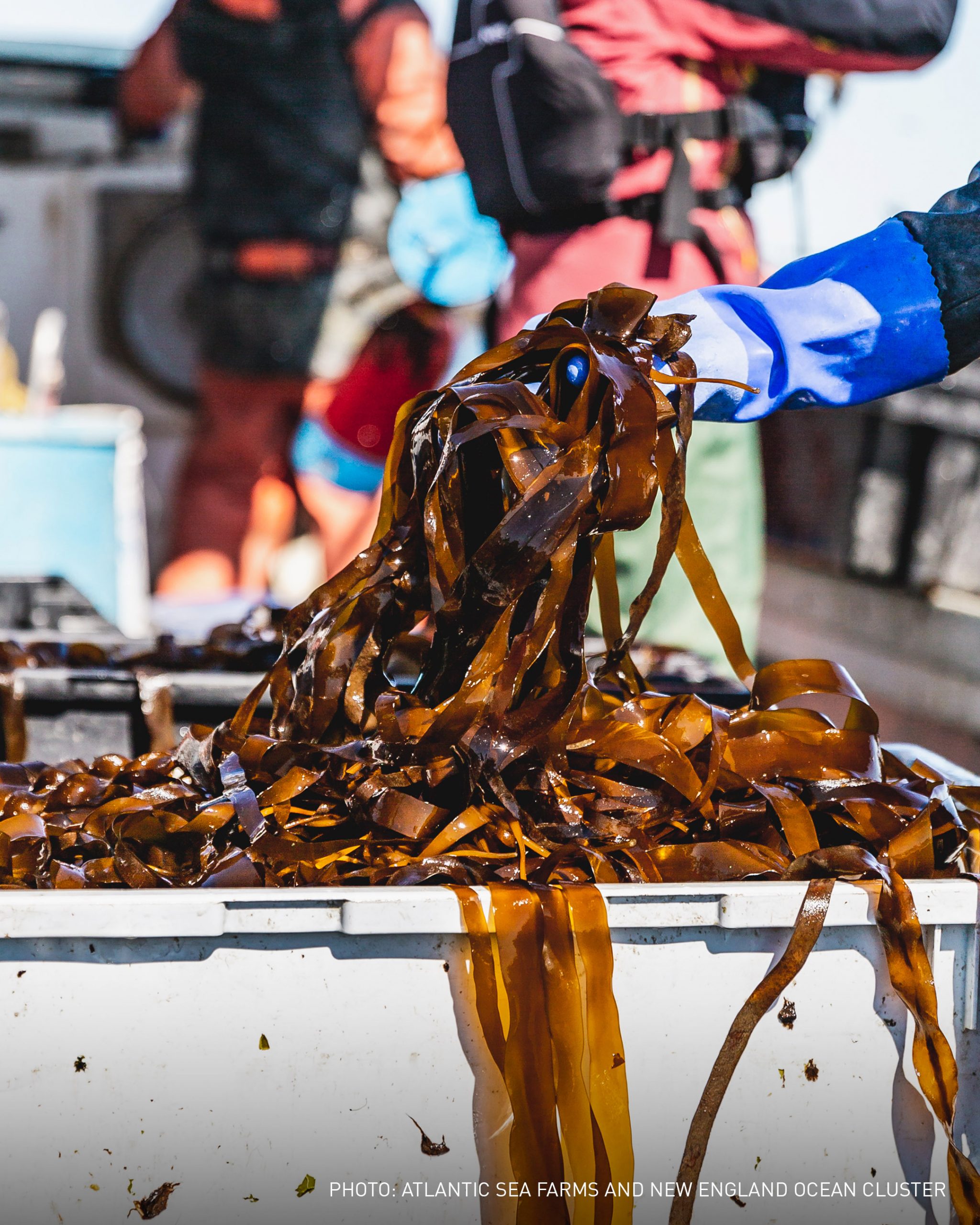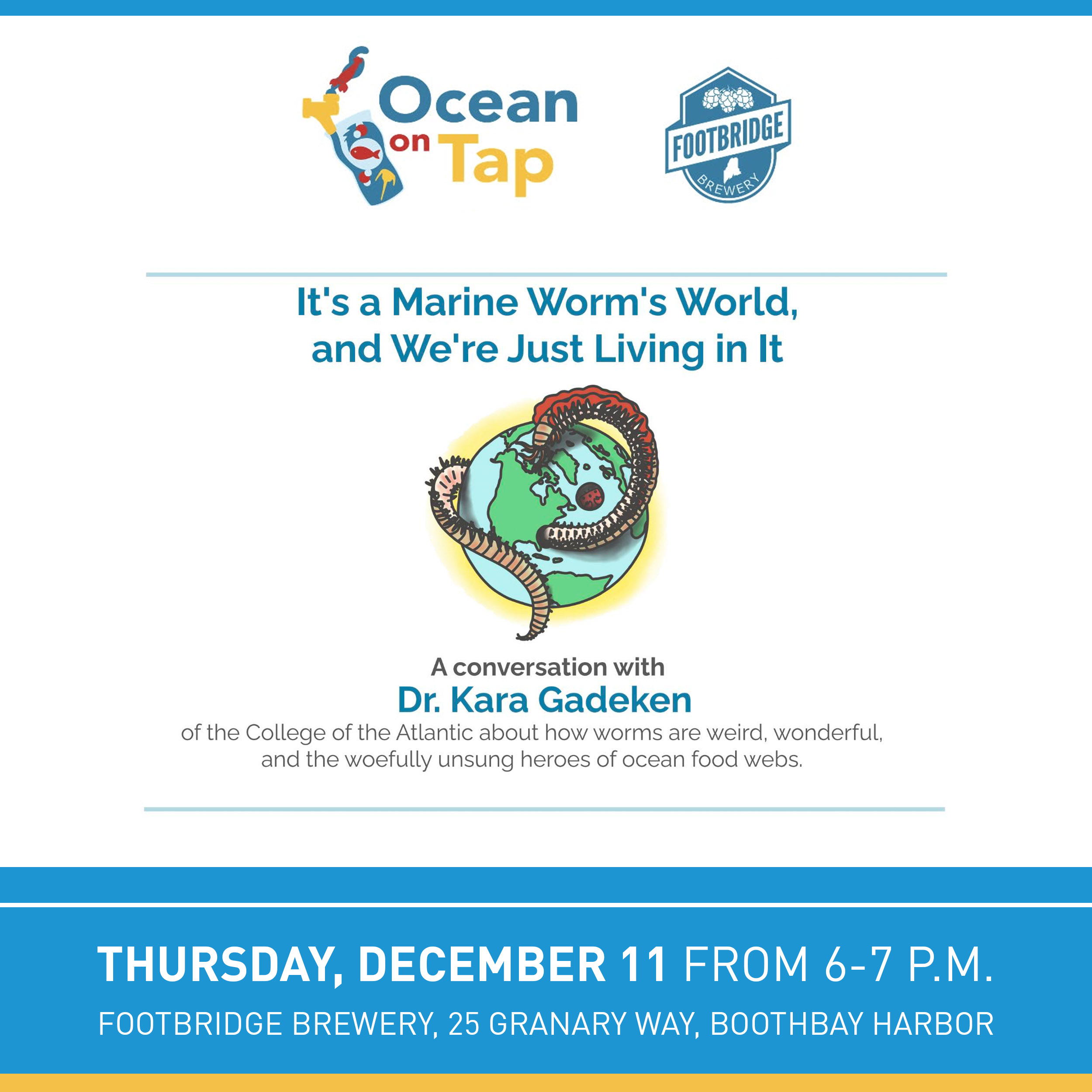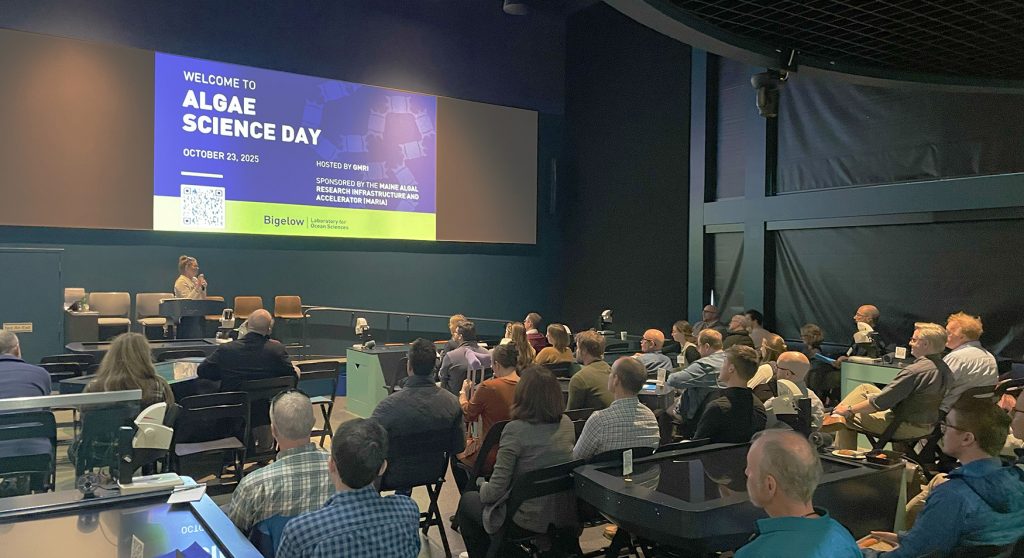
By Kerry Dykens, Macroalgae Curator, Bigelow Laboratory for Ocean Sciences
Last week, Bigelow Laboratory hosted the inaugural Maine Algae Science Day in the gorgeous waterfront building of the Gulf of Maine Research Institute (GMRI) in Portland, a familiar place for me after attending Seaweed Saturday back in April. It’s inspiring to see Bigelow Laboratory’s, GMRI’s, and our partners’ continued dedication to fostering an algae-focused community and exploring algae-based solutions that benefit both people and the planet.
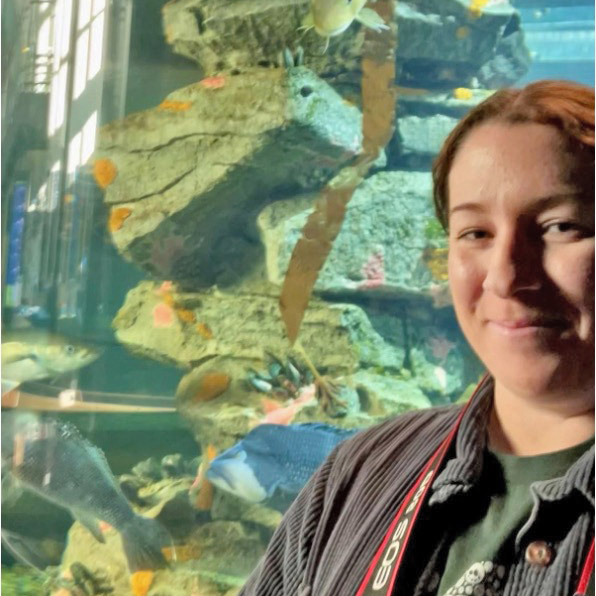
As a macroalgae curator at the National Center for Marine Algae and Microbiota, I spend my days caring for thousands of macroalgae strains in the lab, ensuring their health and longevity for research and innovation. Working with algae like kelp, Gracilaria, and Ulva, I see their potential everyday, but it’s events like Algae Science Day that make that potential feel tangible. Seeing algae move from culture tanks to real-world applications is exactly the kind of transformation I hope to witness more of here in Maine.
I helped welcome guests and quickly recognized several faces from the algae world. It struck me how tight-knit and collaborative this community truly is with scientists, entrepreneurs, and innovators who all seem to share the same excitement for algae’s growing role in our future.
What set Algae Science Day apart was its focus on bridging science with action. The day’s panels were thoughtfully arranged to trace that full journey from discovery to application to investment.
The first panel dove into the science and technology side, where our own Steve Archer, director of Bigelow Analytical Services, opened the session with an engaging talk about how novel compounds produced by algae can be harnessed for innovation. Another speaker described the growing ability to “mine” algae for specific, high-value compounds. The panel concluded with a thoughtful discussion on how universities play a crucial role in this ecosystem by tackling the “risky” early-stage research and testing that businesses may not have the resources or risk tolerance to pursue on their own.
Then came the entrepreneurs in the next panel: four Maine-based small business owners who are already harnessing the power of algae to create products ranging from nutritional supplements and skincare to bioplastics.They shared their successes, challenges, and ideas, sparking valuable discussions about how collaboration can help overcome the hurdles of scaling up.
The final panel brought in investors, rounding out the “making it happen” side of the story. They emphasized that realizing algae-based innovation in Maine requires alignment between science, entrepreneurship, and funding. The state has no shortage of creativity or expertise, but it’s the scaling of production that remains a key challenge. One comment that stood out to me captured the tone of the discussion perfectly: “Maine people are resourceful, passionate, and come together to make things happen.” It was a reminder that there’s still an optimistic view toward the untapped potential of algae.
Those words really resonated with me. Maine has the science, the creativity, and the heart: the next step is about connecting those strengths to bring algae solutions to life.
As the day wound down, I couldn’t help but notice that conversations were buzzing across the room, with animated, curious, and collaborative energy. The room was filled with people representing a wide range of organizations, from research institutions and universities to small businesses and industry groups.
And it struck me that sometimes, the most important outcomes happen not during the panels, but in those in-between moments when people connect, share ideas, and dream up what’s next.
That’s where action begins. And as someone who sees algae potential every day in the lab, it’s deeply exciting to witness that spark taking root right here in Maine.
Throughout the day, I asked participants and attendees to sum up their thoughts about the future of algae. Several responses follow.
